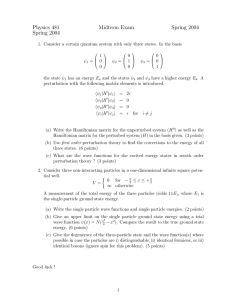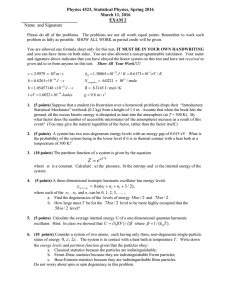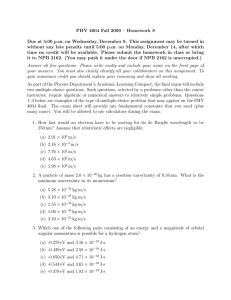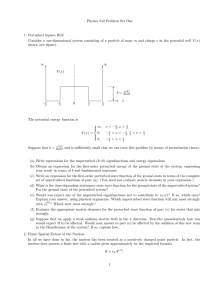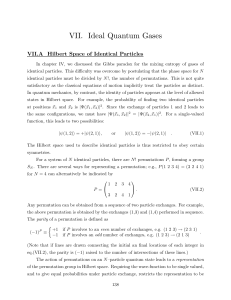PHY 6646 Spring 2002 – Final Exam Instructions:
advertisement
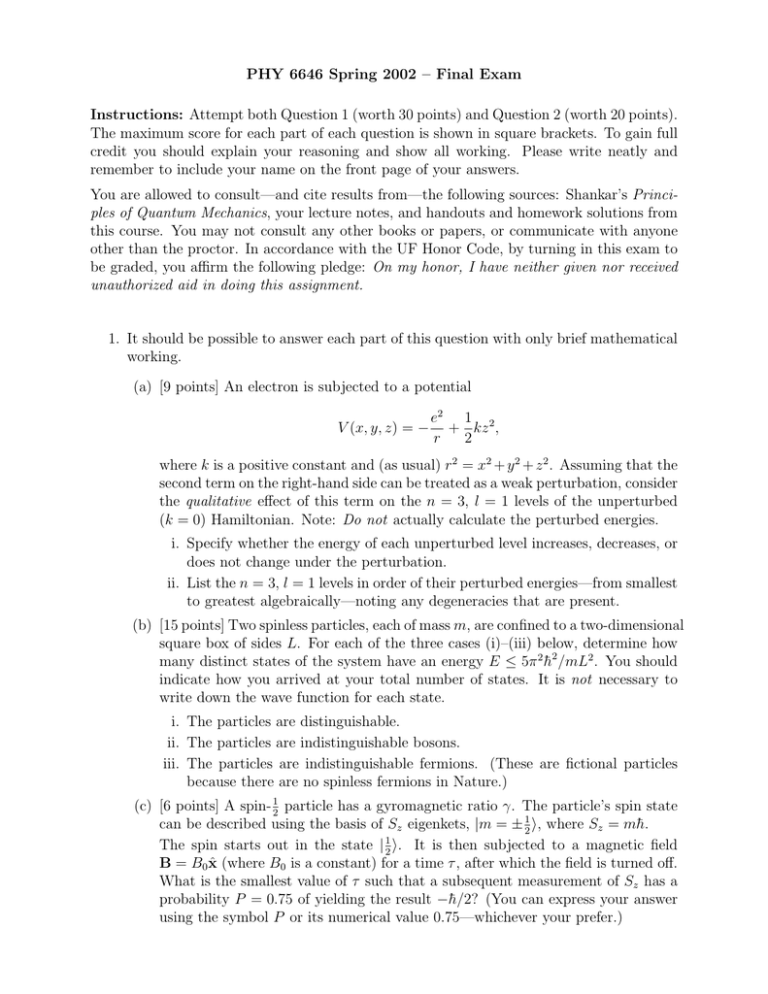
PHY 6646 Spring 2002 – Final Exam Instructions: Attempt both Question 1 (worth 30 points) and Question 2 (worth 20 points). The maximum score for each part of each question is shown in square brackets. To gain full credit you should explain your reasoning and show all working. Please write neatly and remember to include your name on the front page of your answers. You are allowed to consult—and cite results from—the following sources: Shankar’s Principles of Quantum Mechanics, your lecture notes, and handouts and homework solutions from this course. You may not consult any other books or papers, or communicate with anyone other than the proctor. In accordance with the UF Honor Code, by turning in this exam to be graded, you affirm the following pledge: On my honor, I have neither given nor received unauthorized aid in doing this assignment. 1. It should be possible to answer each part of this question with only brief mathematical working. (a) [9 points] An electron is subjected to a potential V (x, y, z) = − e2 1 2 + kz , r 2 where k is a positive constant and (as usual) r2 = x2 + y 2 + z 2 . Assuming that the second term on the right-hand side can be treated as a weak perturbation, consider the qualitative effect of this term on the n = 3, l = 1 levels of the unperturbed (k = 0) Hamiltonian. Note: Do not actually calculate the perturbed energies. i. Specify whether the energy of each unperturbed level increases, decreases, or does not change under the perturbation. ii. List the n = 3, l = 1 levels in order of their perturbed energies—from smallest to greatest algebraically—noting any degeneracies that are present. (b) [15 points] Two spinless particles, each of mass m, are confined to a two-dimensional square box of sides L. For each of the three cases (i)–(iii) below, determine how many distinct states of the system have an energy E ≤ 5π 2 h̄2 /mL2 . You should indicate how you arrived at your total number of states. It is not necessary to write down the wave function for each state. i. The particles are distinguishable. ii. The particles are indistinguishable bosons. iii. The particles are indistinguishable fermions. (These are fictional particles because there are no spinless fermions in Nature.) (c) [6 points] A spin- 12 particle has a gyromagnetic ratio γ. The particle’s spin state can be described using the basis of Sz eigenkets, |m = ± 12 i, where Sz = mh̄. The spin starts out in the state | 12 i. It is then subjected to a magnetic field B = B0 x̂ (where B0 is a constant) for a time τ , after which the field is turned off. What is the smallest value of τ such that a subsequent measurement of Sz has a probability P = 0.75 of yielding the result −h̄/2? (You can express your answer using the symbol P or its numerical value 0.75—whichever your prefer.) 2. Attempt ONLY one of the two parts of this problem: EITHER (a) OR (b). You should attempt to evaluate all integrals explicitly. (a) [20 points] Consider a particle of mass m moving in the one-dimensional potential V (x) = V0 |x/a|, where V0 and a are positive constants. Minimize the expectation value of the energy within the family of wave functions ψ(x) = Cxe−αx 2 /2 , where α is real and positive. Interpret your result in relation to the true eigenenergies of this system. (b) [20 points] Consider scattering of particles of mass m and incident energy h̄2 k 2 /2m from a spherical delta-function shell potential: V (r) = V0 aδ(r − a), where V0 and a are positive constants. Calculate the scattering cross section in the limit ka 1, making no assumption about the magnitude of V0 . Hint: Recall that delta-function potentials impose different boundary conditions on the wave function than do potentials that are finite everywhere.

